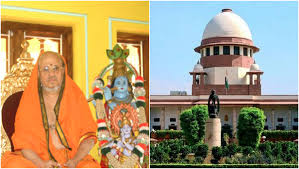Chandrabhan Sudam Sanap vs. State of Maharashtra
Citation: 2025 INSC 116; 2025 LawText (SC) (1) 282; Criminal Appeal No. 879 of 2019
Bench: Justices B.R. Gavai, Prashant Kumar Mishra, K.V. Viswanathan
Background
Chandrabhan Sudam Sanap was convicted and sentenced to death for the 2014 rape and murder of a 23-year-old woman in Mumbai. The prosecution’s case rested entirely on circumstantial evidence, including CCTV footage, last-seen testimony, an alleged extrajudicial confession, and recovery of items belonging to the victim. Both the trial court and the Bombay High Court upheld the conviction and death penalty, leading to Sanap’s appeal before the Supreme Court.
Key Issues and Contentions
Appellant’s Arguments:
Sanap contended that the prosecution failed to prove guilt beyond reasonable doubt. He challenged the admissibility of the CCTV footage for lack of a Section 65-B(4) certificate under the Indian Evidence Act, questioned the reliability of the extrajudicial confession, and argued that the last-seen and identification evidence were inconsistent and uncorroborated.
Prosecution’s Stand:
The State argued that the chain of circumstantial evidence, including the last-seen theory and confession, was sufficient to establish guilt.
Supreme Court’s Analysis
Electronic Evidence:
The Court held the CCTV footage inadmissible due to the absence of the mandatory Section 65-B(4) certificate, reaffirming the principle that electronic records require strict compliance with evidentiary standards.
Extrajudicial Confession:
The Court found the confession to a witness (PW-9) unreliable, noting that such evidence is inherently weak unless corroborated and the witness enjoys the accused’s confidence. In this case, there was no such relationship or corroboration.
Circumstantial Evidence:
The bench emphasized that circumstantial evidence must form a complete and unbroken chain pointing only to the guilt of the accused. Here, the last-seen evidence was inconsistent, witness testimonies were unreliable, and the identification parade was vitiated since the accused’s identity was already public. The prosecution failed to exclude every reasonable hypothesis of innocence.
Legal Standards:
The Court reiterated that the presumption of innocence and the burden of proof rest on the prosecution, especially in cases involving the death penalty. The failure to establish guilt beyond reasonable doubt mandated acquittal.
Decision
The Supreme Court allowed the appeal, set aside the conviction and death penalty, and acquitted Chandrabhan Sudam Sanap of all charges. He was ordered to be released forthwith unless required in any other case.
Significance
This judgment underscores the necessity for rigorous adherence to evidentiary standards, especially in death penalty cases. It reiterates that circumstantial evidence must be conclusive and unbroken, and that electronic evidence must meet statutory requirements. The decision is a significant reaffirmation of the principles of criminal jurisprudence and the presumption of innocence.






























0 comments